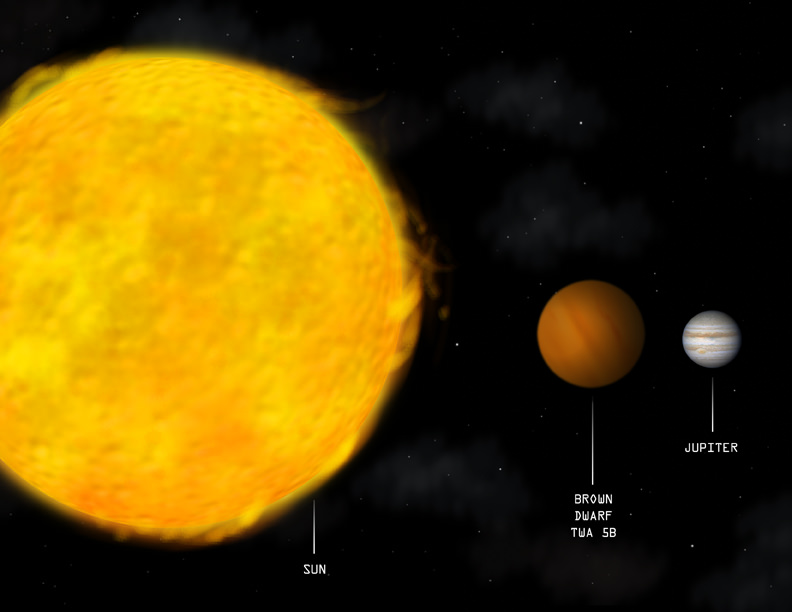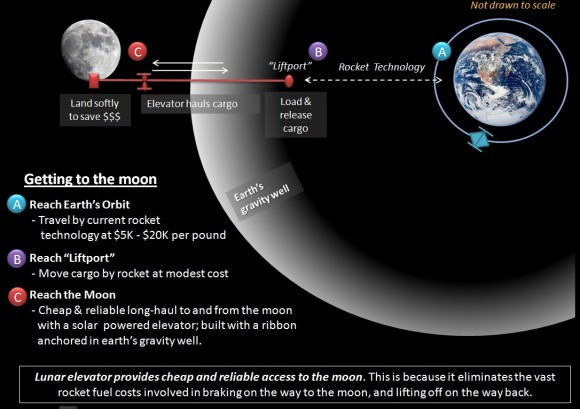 2010 Had Warmest Global June on Record
2010 Had Warmest Global June on RecordJune Land Surface Temperature Anomalies in degrees Celsius. Credit: NOAA
Was last month warm where you live? If so, you weren't alone. According measurements taken by the National Oceanic and Atmospheric Administration (NOAA) June 2010 was the hottest June on record worldwide. But this is not a new trend, at least for this year. March, April, and May 2010 were also the warmest on record. This was also the 304th consecutive month with a global temperature above the 20th century average. The last month with below-average temperature was February 1985.
Here are some of the numbers:
Click to continue…
Developers
Say Lunar Elevator Could be Built Within a Decade
The
idea of a space elevator has been
around since the late 1800's, but despite big dreams and years of
research, the low-cost, easy access to orbit that a space elevator promises is likely still decades away. The biggest problem rests on the
fact that no one has been able to successfully manufacture long ribbons
made of ultra-light, ultra-strong carbon nanotubes, the only known
material that is strong enough for a space elevator. But entrepreneur
Michael Laine believes a lunar elevator – a space elevator from the
surface of the Moon – could be
created with materials that are available now. With more research and
the right amount of capital, Laine says a lunar elevator could be built
within a decade.
Click to continue…
July 17th, 2010
Astronomy
Without A Telescope – Brown Dwarfs Are Magnetic Too

Brown
dwarf TWA 5B compared with the Sun and Jupiter. Although brown dwarfs
are similar in size to Jupiter, they are much more dense and massive -
between 13 and 80 Jupiter masses. Credit: chandra.harvard.edu
I
feel a certain empathy for brown dwarfs. The
first confirmed finding of one was only fifteen years ago and they
remain frequently overlooked in most significant astronomical surveys. I
mean OK, they can only (stifles laughter) burn deuterium but that's something, isn't it? Click to continue…
Latest Look at Mercury
Reveals Surprises

Enhanced color image of Caloris Basin on
Mercury. Credit: Image produced by NASA/Johns Hopkins University
Applied Physics Laboratory/Arizona State University/Carnegie Institution
of Washington. Image reproduced courtesy of Science/AAAS.
Younger
volcanoes, stronger
magnetic storms and a more intriguing exosphere: three new
papers from data gathered during the MESSENGER spacecraft's third flyby of Mercury in September of
last year provide new insights into the planet closest to our Sun. The new findings
make the science teams even more anxious for getting the spacecraft into
orbit around Mercury.
"Every time we've encountered Mercury, we've discovered new phenomena,"
said principal investigator Sean Solomon. "We're learning that Mercury
is an extremely dynamic planet, and it has been so throughout its
history. Once MESSENGER has been safely inserted into orbit about Mercury next
March, we'll be in for a terrific show."
Click to continue…
Hubble
Confirms Comet-like Tail on Vaporizing Planet

Next time you hear someone
complaining that it's too hot outside, you can make them feel better by
pointing out that at least their planet isn’t so hot it
is vaporizing into space. Unless of course
you happen to be speaking to someone from the gaseous extrasolar planet
HD 209458b.
New observations from the Hubble Cosmic Origins
Spectrograph (COS) confirm suspicions from 2003 that the planet HD
209458b is behaving like a Jupiter-sized comet, losing its
atmosphere in a huge plume due to the powerful solar wind of its
too-close star. Click to continue…
Big or Small, All
Stars Form the Same Way

IRAS 13481-6124 (upper left is about twenty
times the mass of our sun and five times its radius. It is surrounded by
its pre-natal cocoon. Image credit: NASA/JPL-Caltech/ESO/Univ. of
Michigan
How do massive stars form?
This has been one of the more hotly debated questions in astronomy. Do big stars form by accretion
like low-mass stars or do they form through the merging of low mass protostars? Since
massive stars tend to be quite far away and usually are surrounded by a
shroud of dust, they are difficult to observe, said Stefan Kraus from
the University of Michigan. But Kraus and his team have obtained the
first image of a dusty disc closely encircling a massive baby star, providing direct
evidence that, big or small, all stars form the same way.
“Our
observations show a disc surrounding an embryonic young, massive star, which is
now fully formed,” said Kraus. "It's the first time something like this
has been observed, and the disk very much resembles what we see around young stars that are
much smaller, except everything is scaled up and more massive."
Click to continue…
https://universetoday.com/



